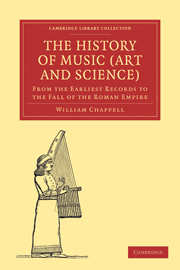Summary
Organs of two kinds were known to the ancients. One was the “Pneumatic Organ,” which was blown by bellows fashioned very much in the present style, and the second was popularly called the “Hydraulic Organ” (in Greek, Hydraulis, or Hydraulikon Organon). In spite of its name, this second instrument was decidedly not hydraulic, although it bore the appearance of being so.
The Hydraulic Organ was always an enigma to superficial observers. They saw water bubbling up from the bottom of an open vessel, and the water in the perpetual interchange of rise and fall, and of rolling or tumbling about. They saw a piston working in a cylinder, and at every stroke of the piston the water rose higher in the vessel. Hence they concluded, naturally enough, that it was water which was undergoing the process of injection into the pipes of this organ, and that the effects were produced by means of that syringe-like pump. But it was simply a condensing syringe acting upon air.
Ctesibius, the Egyptian, was the inventor, and the date of this one of the several inventions attributed to him may be fixed within the reign of Ptolemy Philadelphus, or between the years 284 and 246 B.C. The question may one day arise as to whether all these were the inventions of Ctesibius, or whether he was but the medium of communicating Egyptian science to the Greeks.
The biographer of Philõn, the celebrated mechanician of Byzantium, in Dr. W. Smith's Dictionary of Greek and Roman Biography and Mythology, has relied upon a statement by Athenseus, that Ctesibius flourished in the reign of Ptolemy Euergetes II.
- Type
- Chapter
- Information
- The History of Music (Art and Science)From the Earliest Records to the Fall of the Roman Empire, pp. 325 - 404Publisher: Cambridge University PressPrint publication year: 2009First published in: 1874

